For the honour of the number one spot on The Irish Times Top 50 cars for 2024, one of the biggest decisions was to decide who came out on top between two cars: Hyundai’s Ioniq 6 and the BYD Seal.
The Koreans have gathered a bulging cabinet of awards since they went down the EV route. The Ioniq 5 was our top car two years ago and the Ioniq 6, with which it shares much of its underpinnings, is the sleeker sibling. So sleek in fact that its design has been divisive. But styling is subjective and the Ioniq 6 has a love-it or loathe-it look. Yet in every other regard it’s hard to dispute this is a very accomplished car.
For fans, there’s a homage to Porsche in the way the rear sweeps away. And for detractors, even they have to admit it’s another example of how Hyundai is moving the design dial. The Ioniq 5 challenged the boxy crossover malaise, while the 6 tackles the staid saloon.
And that slippery styling is not just for aesthetics; it has real aerodynamic benefits, helping to deliver a claimed range of 614km from the 77kW battery pack with rear-wheel-drive or 429km from the 53km battery pack in the same format.
From Baby Reindeer and The Traitors to Bodkin and The 2 Johnnies Late Night Lock In: The best and worst television of 2024
100 Years of Solitude review: A woozy, feverish watch to be savoured in bite-sized portions
How your mini travel shampoo is costing your pocket and the planet - here’s an alternative
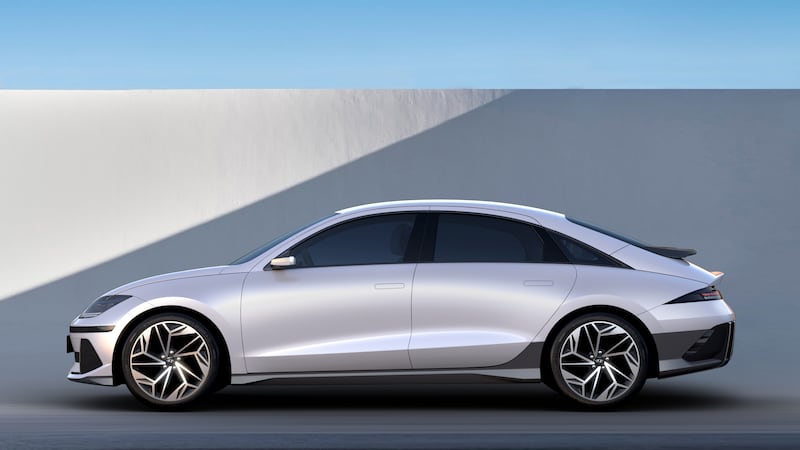
Our time spent in the 77kW saw it easily deliver more than 400km, driving mostly at motorway speeds. A greater mix of suburban and town driving should get you close to the claimed range without having to try too hard.
Inside the cabin is uncluttered, spacious and cleanly designed. There is plenty of gadgetry on offer, not least the self-parking system that lets you watch from outside as the car negotiates into its spot. The cabin itself is smart, but there are touches where it could be better. For example, the plastics used are not as good as we had hoped in places, such as the central console.
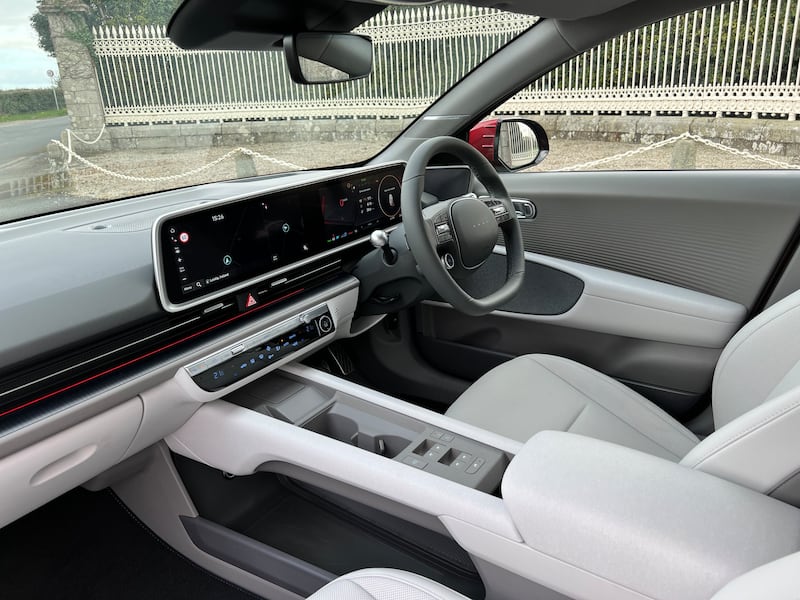
In the back, there is impressive legroom and headroom, though boot space is limited to 401 litres.
In the other corner of our competing car park, we have the BYD. Anyone with even a passing interest in the motoring world is aware of the plethora of new brands which have arrived in the last decade. So many that Tesla is now part of the old guard.
Despite having its Atto 3 crossover on sale here for a while, BYD is still a relative unknown on the Irish market, though we’re told it has cropped up already in a few pub quizzes.
A quick reminder: BYD stands for Build Your Dreams. That cheesy moniker aside, it’s one of the world’s biggest battery makers. You probably have a device that runs on a BYD rechargeable battery already. Among its bluechip backers, early investors included Warren Buffet’s Berkshire Hathaway and more recently Samsung Electronics. It moved into the motor business several years ago and is now making its move against the European giants. Don’t be fooled: BYD is a giant in its own right. This is no start-up.
The Seal is the latest model to hit the Irish market, after the Atto 3. That first car was a competent crossover, but the Seal could be seen as the standard bearer for the brand. It’s not shying away from the competition either.
It’s neither designed nor pitched as the economy option on the market (even though the price is very competitive). BYD regards the Seal as a rival to the Tesla Model 3, BMW i4, Polestar 2 and, of course, the Hyundai Ioniq 6. That’s some company to keep for a brand seemingly fresh off the boat.
And rightly so. Of the models BYD has in the pipeline for Europe right now, the Seal is the most exciting. It lays to rest any inherent prejudices people may have about the design of Chinese cars.
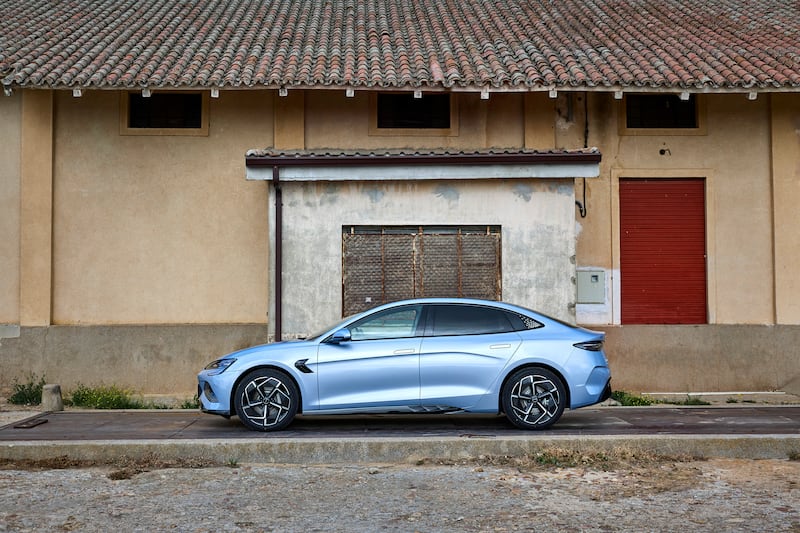
And rightly so, for BYD turned to Wolfgang Egger, the great German car designer whose previous work includes the stunningly beautiful Alfa Romeo 8C Competizione.
The Seal’s styling has the sleekness of an Audi or BMW, leaving the Tesla Model 3 looking frumpy, calling into question BMW’s fixation with big front grilles and the fascination other brands have with shoehorning SUV traits onto saloon cars.
The interior is luxurious; a cabin befitting of any BMW or Audi, and much better than what both offer on their entry grades. There is a high-quality finish throughout with incredibly comfortable seats. The front dash is dominated by the massive 15.6in touchscreen that does the BYD trick of rotating between upright and landscape. Jump from this car into a Tesla Model 3 and you will see why critics grumble about that brand’s fit and finish.
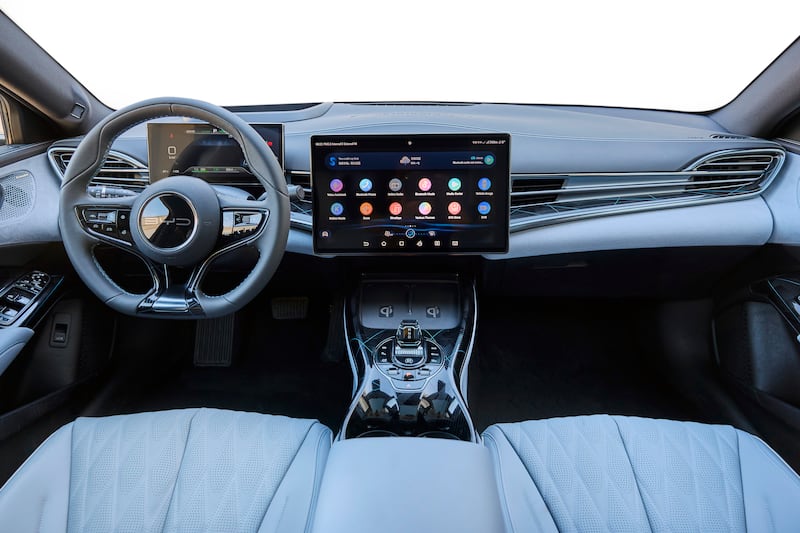
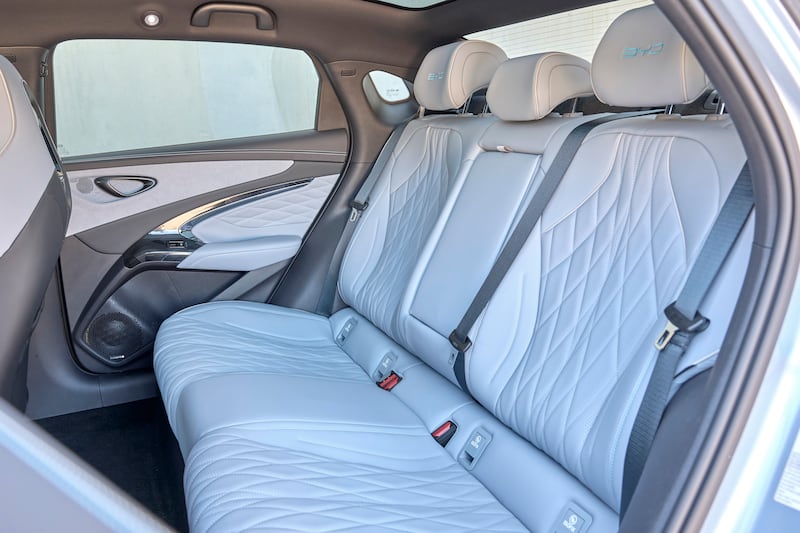
Space is perhaps a little less than on the Ioniq 6 in areas, more akin to what you’d get from a regular premium saloon, with a boot space of 400 litres and a few more litres in the nose. But the cabin feels airy thanks to the standard panoramic roof. Rear seat legroom is impeded by the bulky sports seats in the front, so for rear passengers the legroom of the Ioniq has the edge.
The 312hp rear-wheel drive single motor version has a range of 570km from a 82kWh battery with a 0-100km/h time of 5.9 seconds and there’s the higher performance four-wheel drive two-motor 530hp version that will deliver a 0-100km/h time of 3.8 seconds.
During recent tests, my colleague got to test the Seal on track and it repeatedly delivered that acceleration, demonstrating the quality of BYD’s battery and motors.
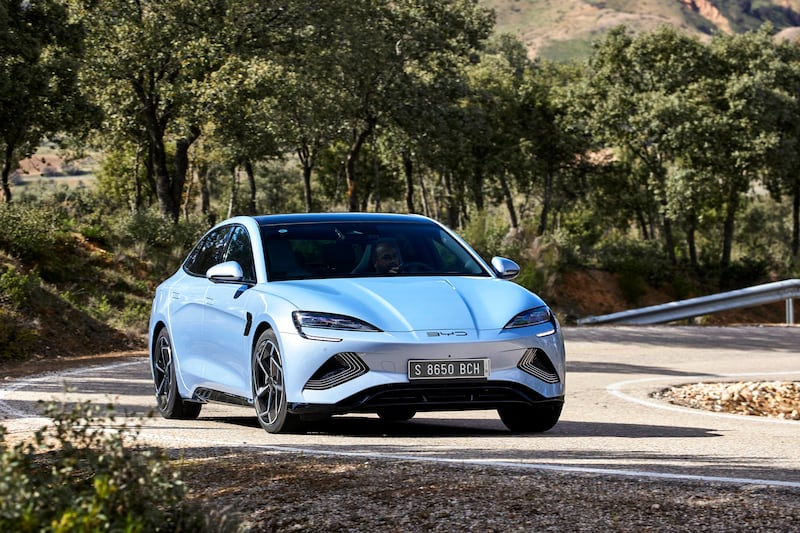
The Seal also showcases BYD’s latest engineering feats, such as its Cell-to-Body technology which makes the battery pack a stressed section of the car’s body, improving safety and structural rigidity. It also features the firm’s more sophisticated traction control system. And that comes into its own in delivering the 530hp onto the tarmac in all types of weather conditions.
So those are the contenders: what are they like on the road?
The Hyundai is really a cruiser, with a set-up that can be adjusted but is never really going to make its name as a sports coupe, despite the 0-100km/h time of 7.1 seconds.
Its suspension occasionally thumps over a very difficult bit of tarmac, but for the most part the 6 rides serenely. It’s not quite what people term a driver’s car — the steering is light and direct but lacks feel and with its 3m wheelbase it’s not the most agile thing around. It’s impressively smooth and quiet, best suited to mile munching.
The Seal’s real talents are quickly apparent on the road. The car is as composed and supple in dealing with badly surfaced back roads as any premium German rival. It’s also remarkably quiet and refined.
These winning traits are matched with a steering feel and precision that would do BMW proud. Somehow it never feels limited by its 3m wheelbase or 4.8m overall length. And there is simply phenomenal acceleration in the all-wheel drive version, but as with the best European premium sports cars, the driver always feels in control.
As usual these days, there’s a variety of driving modes, but the normal setting is the car’s sweet spot. Ultimately the Seal delivers all the key traits, from braking, steering, balance and ride quality to a premium European brand standard.
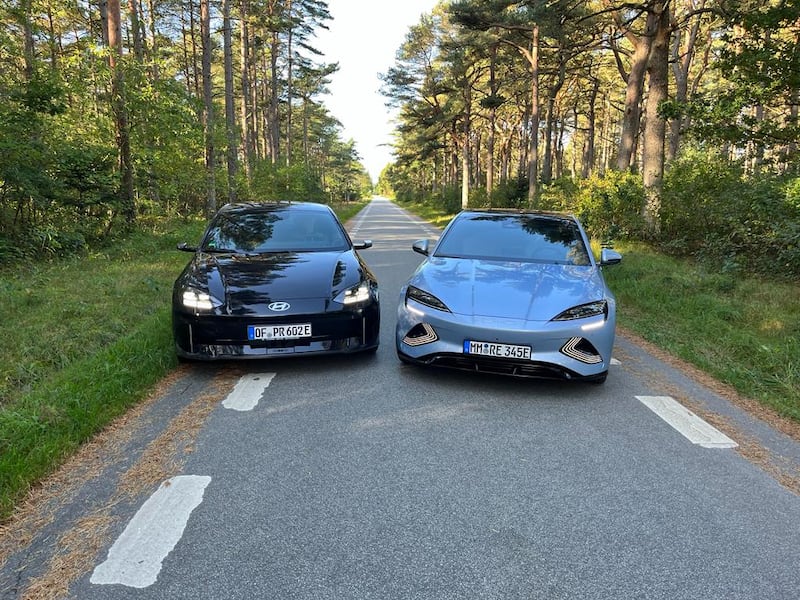
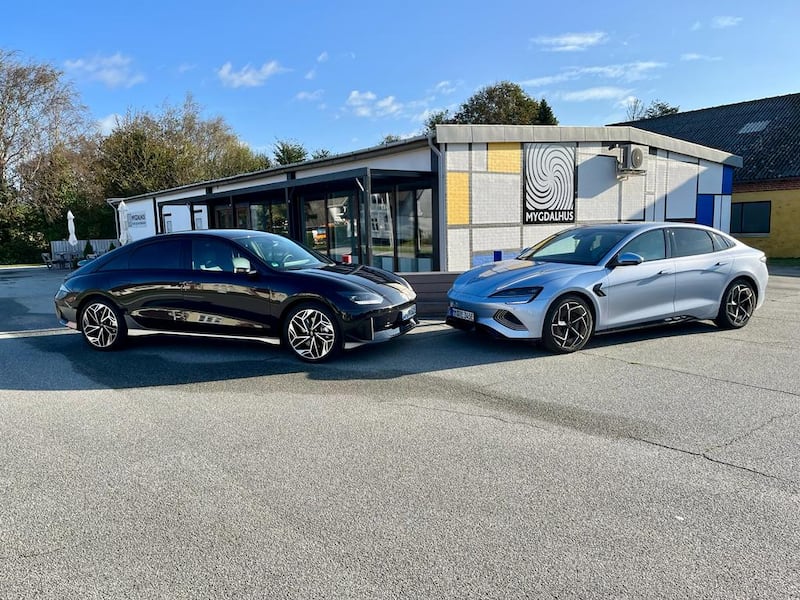
Which brings us to the pricing. Hyundai’s Ioniq 6 with 53kW battery is on the road for €45,395 while the larger 77kW with the same Signature specification starts at €50,245. Move up to the all-wheel drive version and you are talking about €69,250.
As for the Seal, the rear-wheel drive Design version is on the road for €44,036 while the high-performance all-wheel drive Excellence specification comes in at €49,836.
Weighed against what’s on offer across the market by its rivals, the Seal seems like a value proposition. Spend time driving the Seal and you can see why its rivals are rightly worried.
Buyers of either car will be happy with their purchases, but for us the Seal wins out for its sleek looks, quality cabin, competitive price and sheer driving fun.
The Chinese are no longer closing the gap on established rivals; they’re overtaking them.
The Irish Times Top 50 cars for 2024 full list
The 50 best cars for 2024 – in reverse order: 50 to 31
The 50 best cars for 2024 – in reverse order: 30-11
The 50 best cars for 2024 – in reverse order: 10-1
- Sign up for push alerts and have the best news, analysis and comment delivered directly to your phone
- Find The Irish Times on WhatsApp and stay up to date
- Our In The News podcast is now published daily – Find the latest episode here










